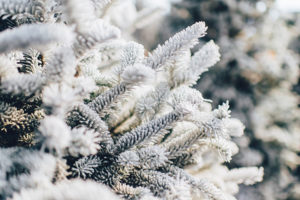
Dress Appropriately for Winter Weather
Dress warmly in layers, wear waterproof clothes, and don’t forget warm boots and a hat! Since you need to use your fingers for camera adjustments and shutter release, consider bringing gloves for cross-country skiing or shooting gloves that function as both fingerless gloves and mittens to keep your hands warm. Sun reflections on the snow are bright, so bring your favorite sunglasses as well.
Camera Gear and Settings
Cameras do not like quick transitions between the warmth of a building (or tucked inside your clothing) and cold winter weather – condensation can form on both the outside and inside of the camera when temperatures change rapidly. One solution is to place it in a sealed plastic bag when you are finished photographing, then allow it to warm very gradually to room temperature before removing it from the bag. Unlike cameras, batteries do not like the cold. It’s a good idea to bring an extra one you keep warm in a place like an inside pocket, so you can change it if the one in the camera gets low. Put the drained one back into the pocket, and you may be able to use it again when it is warm.
Another good extra to bring along are memory cards – you will have more flexibility to experiment with different exposures of the same composition. Extra memory cards are especially important if you are shooting the larger size RAW images. Plan on using RAW format if possible and don’t delete any images until you can view them later on a larger screen than on your camera. RAW format gives you more flexibility and easier ways to correct problems in images than JPEG, so you may be pleasantly surprised with images after editing.
Brilliant white snow can confuse auto settings on your camera, and lead to underexposed and/or out of focus images. The solution is to use manual settings that you can adjust. Autofocus needs contrast to function, and expanses of white snow may cause problems, so try to focus on something dark within the scene. Based on meter readings of both bright snow and any mid-tone objects, you can adjust the shutter speed and aperture appropriately– increasing exposure slightly may enhance the white appearance of the snow.
Changing Lighting Conditions
Snowy landscapes can photograph wall in both sunny and cloudy weather, and lighting quality can change quickly. Be sure to use a lens hood for snowy landscapes, since flare caused by snow can make photos look hazy. Avoid using flash, since the bounce off the snow can cause overexposure. The warmer light at sunrise and sunset, combined with cooler blue tones of snow, can be dramatic. These times of day often are the coldest, and colder air is clearer, often with ice crystals that diffract the light, resulting in more brilliant colors.
Composition Pointers
Less is sometimes more, so frame objects carefully. Include other visual elements to add interest to your composition – buildings, trees, etc. that you can frame against the snowy background. You might see the color contrast of a red barn in the white landscape, or elements such as a lamppost, sap buckets on a tree, etc. in the foreground. Consider your composition from different perspectives, such as near the ground as well as eye level. Variations in the snow may be highlighted by changing your camera’s position.
Shadows in low winter light may cast dramatic, stark shadows on the ground against the whiteness of the snow. You can use this kind of shadow to lead the viewer into your composition (making sure your own shadow isn’t visible, of course)! Likewise, think about the footprints you leave in the snow, and don’t walk through a location you hope to include in a future photograph (unless you plan to use footprints in your composition).
Winter will turn into spring before you know it, so why not look at the weather forecast, check our availability, and make your plans for a getaway before the white of our winter landscapes turn to the green of spring? No matter how cold or snowy the day, a warm welcome at the Inn and a cozy dinner in the Farmhouse or at the Brewing Company will await you!
Photo by Ian Schneider on UnSplash

